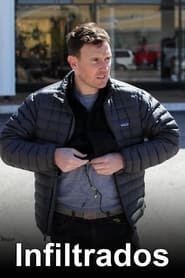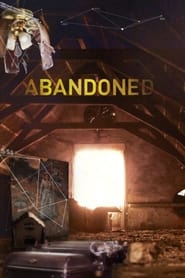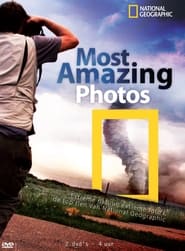National Geographic TV Series - Page 21
-
Big Fish, Texas
2016
Big Fish, Texas
2016
Big Fish Texas follows Galveston’s Guindon family as they try to keep Katie’s Seafood Market – their family business – growing and thriving at all costs. A homegrown enterprise built both on land and at sea, the challenges at Katie’s are everywhere. On the water, they battle against long days, longer nights, a sea full of predators, and Mother Nature’s whims. At home base, they struggle to juggle surpluses, shortages, and orders while also processing a quarter of the Gulf’s deep-water fish and spearheading initiatives to preserve their fishery. But no matter how busy the business keeps them, at the end of the day this is a family built on old-fashioned values, and they’d never miss an opportunity to get together for a good laugh and a home-cooked meal. -
Wild Edens Russia
2018
Wild Edens Russia
2018
The WILD EDENS project was initiated by the State Atomic Energy Corporation “Rosatom” and includes the filming and broadcasting of a series of full-length documentaries on distant corners of nature, whose ecosystem is especially vulnerable to the effects of global warming. The main goal of the project is to attract the attention of the international community to climate change and the need for a global transition to clean energy. WILD EDENS: RUSSIA - the first film of the new series, telling about the flora and fauna of the one of a kind wild corners of Russia: the Altai Mountains, the Kamchatka Peninsula and the Arctic -
Helicopter Wars
2009
Helicopter Wars
2009
-
Mega Cities
2004
Mega Cities
2004
-
Comic Store Heroes
0000
Comic Store Heroes
0000
Comic Store Heroes is a reality television program set inside Manhattan's Midtown Comics, the largest comic book store in the United States. Described as a one hour documentary about comic book subculture, it is British production company Parthenon Entertainment's first U.S.-based factual entertainment production, and premiered on the National Geographic Channel on July 13, 2012 at 8pm Eastern Standard Time. As with Comic Book Men, a similar series airing on AMC starring Kevin Smith, the program focuses on the interactions among the store's staff, and with its customers. -
Kingdom of the North
2015
Kingdom of the North
2015
From coast to coast, from the plains to the forests, from the wide and open grasslands of the prairie to the cold and seemingly barren landscapes of the Arctic: this is the comprehensive story of a country that we know today as Canada—and it's also the story of how this land and its wildlife was shaped by humans. -
World's Cutest Animals
2019
Six of the World's Cutest Animals are gathered here, but which is the cutest of them all? -
Python Hunters
2010
Python Hunters
2010
-
American Gypsies
2012
star 7Follow a family of New York gypsies, named the "John's", as they, like many families, love and support one another, while trying to remain loyal to their traditions. -
K-9 Border Wars
2017
K-9 Border Wars
2017
The dogs of U.S. Customs and Border Patrol work the border day and night to stop the flow of illegal contraband. -
Humanly Impossible
0000
Humanly Impossible
0000
-
DogTown
2008
DogTown
2008
DogTown is a National Geographic Channel series set at the Best Friends Animal Sanctuary, a 33,000-acre animal facility in southern Utah. It is a documentary-style program that profiles staff and volunteers as they care for dogs in need of homes. Many animals featured are severely abused or neglected or in need of specialized medical treatment. The goal is usually to secure each dog an adoptive home but if this is not possible, animals are cared for at the sanctuary for the remainder of their lives. The show first aired on January 4, 2008, and continued for four seasons. The final episode aired on March 12, 2010. By participating in the series, the sanctuary aimed to raise public awareness of issues in animal welfare as well as funds for their life-saving work. Best Friends Animal Society has credited the show with dramatically improving membership, volunteer, and visitor numbers, as well as helping secure homes for many dogs on the program. -
Inside: Secret America
2013
Investigative journalists Mariana van Zeller and Darren Foster take you inside the nation's underground networks and to the heart of the most controversial issues. -
Crowd Control
2014
Crowd Control
2014
Crowd Control is a show presented by behavior expert Daniel Pink, and aims to make people think twice about their actions. -
Inside
2007
Inside
2007
National Geographic Inside secures exclusive access to some of the most difficult stories and takes viewers inside topics with new insight and perspective. -
Mission Critical
2016
-
Abandoned
2012
Abandoned
2012
The saying goes, “one man’s junk is another man’s treasure” and that is certainly the case for expert carpenter and collector Jay Chaikin. He makes a living scouring the nation for abandoned buildings that may hold unexpected “gems” of history with shockingly high values. Follow Jay and his buddies Dan and Mark across the country on their ongoing quest to find their next big paycheck. Along the way, they’ll find classic items like Coca Cola memorabilia, an Edison phonograph, and a Zenith radio, as well as surprising discoveries like an early microwave oven and a top secret manual for a Boeing B-52 bomber. -
Life of Oceans
0000
Life of Oceans
0000
-
Extreme Exposures
2011
Extreme Exposures
2011

















